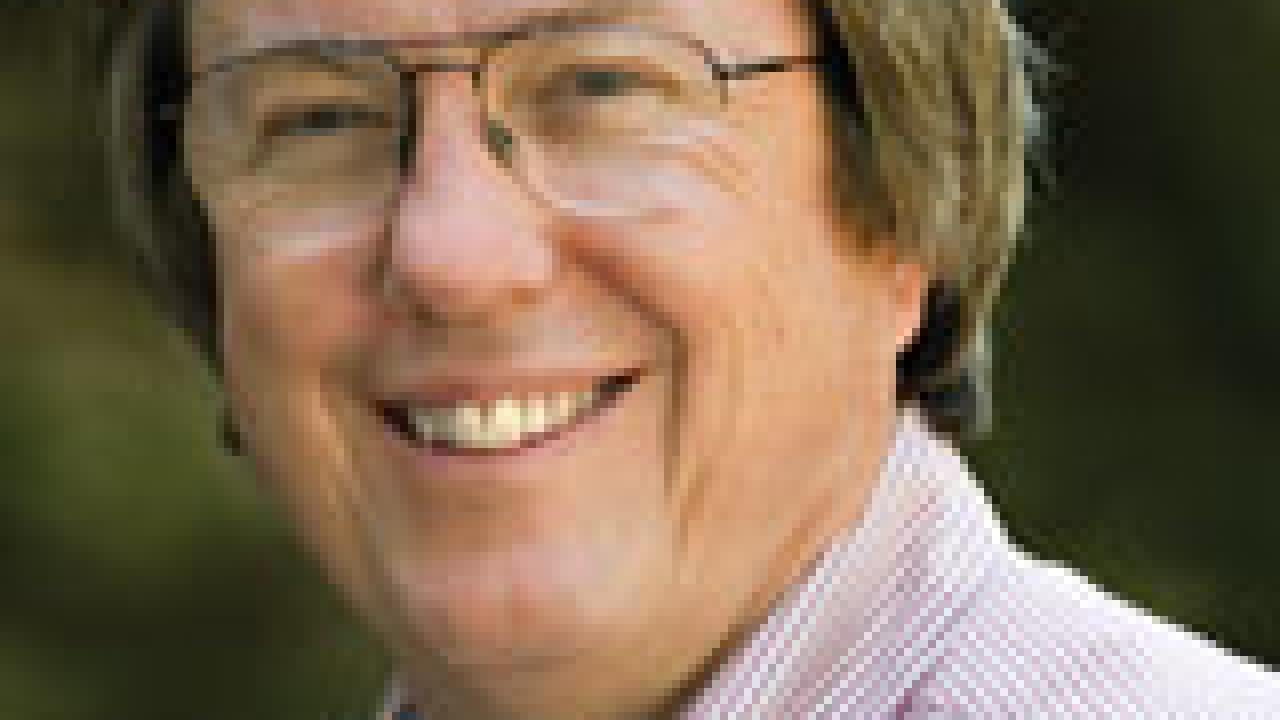The campus is getting greener.
Just ask Sid England. He’s in the thick of sprouting sustainability efforts at UC Davis, which may well be leading the green wave throughout the UC system.
On Oct. 9, England, assistant vice chancellor for environmental stewardship and sustainability, told about 75 faculty, staff and students in Hart Hall what the campus is doing as it embarks on its Second Sustainable Century. The talk, “UC Davis Sustainability Initiatives,” is one of several in the Landscape Architecture Lunchbag Lecture Series exploring sustainability in the land of the Aggies.
“Stewardship and sustainability is part of our mission,” said England, noting that UC Davis is the UC’s largest campus land-wise. “We own 5,300 acres here,” a fact that constitutes both possibilities and challenges related to clean energy, green buildings, transportation, operations, recycling, waste management and more.
Defining sustainability as the practice of meeting our present needs while enhancing the environment and the ability for future generations to thrive, England described several ways the campus is working to reduce its carbon footprint and greenhouse gases:
• Limit increases in our energy use caused by new buildings
The UC policy on new buildings is that they should be designed to meet, at a minimum, the silver standard of the U.S. Green Building Council’s LEED certification program (LEED stands for Leadership in Energy and Environmental Design). They should also exceed the requirements of Title 24 of the California Energy Code by 20 percent.
But UC Davis intends to surpass the UC standard, England said. “If UC says a 20 percent reduction in energy use is good, then we intend to get a 25 percent reduction.”
For example, Maurice J. Gallagher Jr. Hall, the new home of UC Davis’ Graduate School of Management, is the first building on the UC Davis campus and the first business school in California to qualify for LEED’s gold standard certification.
Also, the West Village project aims to be the first U.S. community to employ energy efficiency measures and local renewable energy that, over the course of a year, would result in zero net energy from the electrical grid.
• Improve energy efficiency in existing buildings
Shields Library will be the first campus building to use the LEED standards for existing buildings. Over the next three years, working with Pacific Gas & Electric Co., the campus will implement more than 160 retrofit projects in more than 80 buildings to reduce energy use by lighting, heating and air-conditioning systems.
Other energy-efficiency programs include replacing lights in campus parking structures with efficient LED lamps equipped with motion sensors. In addition to reducing energy use, the lamps increase safety, England said.
“The Police Department loves it. When someone is moving around in the parking structure late at night, the lights show where they are.”
England also mentioned the buyback program for inefficient refrigerators and freezers, which has eliminated nearly 250 pre-1995 appliances, or replaced them with EnergyStar models.
• Reduce the amount of energy we use individually
A tremendous opportunity exists to cut energy use on campus by managing the use of fume hoods in our laboratories, England said. “Some are running all the time and may not have been in use for years.”
Sustainability manager Allen Doyle has launched an educational program to encourage proper “sash management” — setting the window opening at a level high enough to allow the hood user to reach inside and get their work done, but low enough that the least room air is wasted. Also: As with the lighting retrofits, there’s a safety bonus to this energy efficiency.
England also described a pilot project on Mrak Hall’s third floor, led by sustainability planner Camille Kirk, that may be implemented in other offices. About 75 third-floor staffers reduced their energy consumption by turning off computers, printers and other devices when not in use. They also fine-tuned their existing recycling practices and added a compost bin for food scraps.
• Produce more electricity with sustainable technologies
In the future, we will make more of our own energy here on campus. For example, a campus work group recommended installing approximately 900 kilowatts of solar photovoltaic panels on the brewery, winery and food facility, Tercero South Student Housing, Segundo Services Center and Segundo North. The group is looking for more solar-panel opportunities.
England acknowledges that the campus’ sustainability goals are ambitious. So, are they realistic?
“By drawing on the expertise and commitment of faculty, students and staff, and if societal goals and public policy support renewable energy — with all that, I think the answer is yes,” he said.
More information
Landscape Architecture Lunch bag Lecture Series: lda.ucdavis.edu
Sid England’s presentation: lda.ucdavis.edu/program/undergrad/LDA190-10-9-09.pdf
Media Resources
Clifton B. Parker, Dateline, (530) 752-1932, cparker@ucdavis.edu
